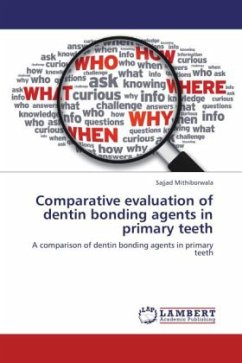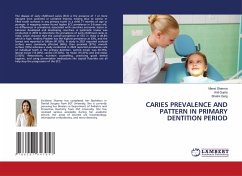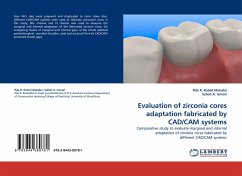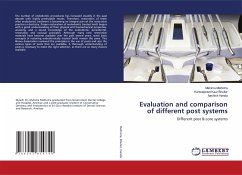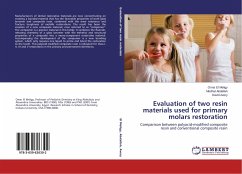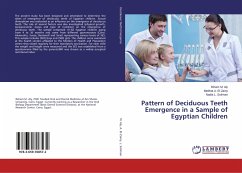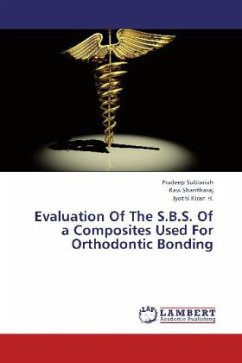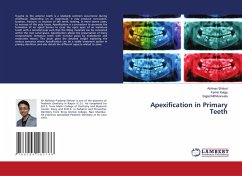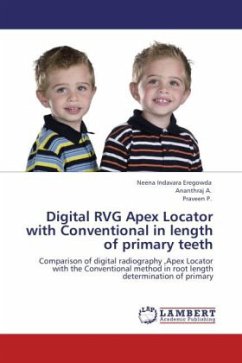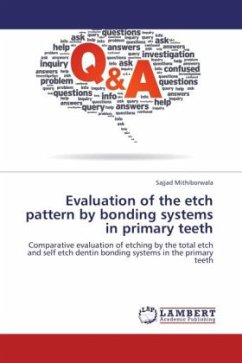
Evaluation of the etch pattern by bonding systems in primary teeth
Comparative evaluation of etching by the total etch and self etch dentin bonding systems in the primary teeth
Versandkostenfrei!
Versandfertig in 6-10 Tagen
32,99 €
inkl. MwSt.

PAYBACK Punkte
16 °P sammeln!
Rampant caries observed at all ages affects those teeth and tooth surfaces which usually are regarded as immune to ordinary decay. Restoration of these lesions with a strong permanent bond between dental tissues and restorative dental materials is a highly desirable property of restorative dentistry. Ultra morphological characterization shows that the interfacial morphological and bonding systems are strongly associated and thus understanding the interfacial phenomenon would be of direct relevance in the use of dental adhesives. Chemical, physiological and micro morphological differences such ...
Rampant caries observed at all ages affects those teeth and tooth surfaces which usually are regarded as immune to ordinary decay. Restoration of these lesions with a strong permanent bond between dental tissues and restorative dental materials is a highly desirable property of restorative dentistry. Ultra morphological characterization shows that the interfacial morphological and bonding systems are strongly associated and thus understanding the interfacial phenomenon would be of direct relevance in the use of dental adhesives. Chemical, physiological and micro morphological differences such as decreased mineralization, small size and lower concentration of dentinal tubules, decreased permeability and more reactivity of primary dentin to acidic conditioner were thought to be responsible for lower bond strength and sealing ability in primary dentition. Despite simplification of bonding systems, technique sensitivity and substrate variability; concerns about enamel and dentin bonds have increased. In the light of these developments this study was undertaken to compare the dentin bonding agents.




